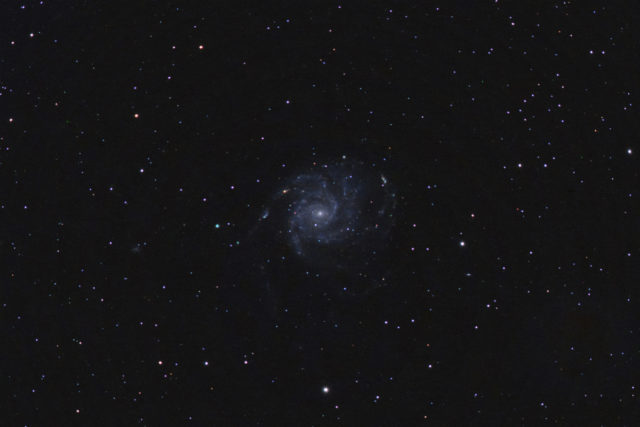It was a Friday night, March 3rd/4th, clear and cool. The Moon was out at 83% full. So, I thought it would be a perfect night to test the Antlia Triband RGB Ultra filter in moonlight conditions to see how bad that would affect it and to get an update on how Comet C/2022 E3 was doing.

Well, the comet’s photogenic appearance has diminished quite a bit since I last imaged it in mid-February. The filter I used probably attenuated the brightness, but by the size in this full field image you can see the comet is much further away from us and receding into the distance fast. Oh, well. It was fun while it lasted.

Next up, I did some EAA-type imaging to test short exposures with the filter on a bright object like M42. It worked pretty good for such a short time (83×15 sec or 20 minutes) of exposure. But, it would need quadruple that time to get right and I was more interested on using longer exposures that would bring out dimmer nebulae better.
So, I switched to the nearby Horse Head Nebula and Flame to test the filter with one minute exposures. I refocused first since M42 looked out of focus and glad I did since it was way off.
The Horse Head and Flame were a better choice for the amount of moonlight out and a better test of the filter’s ability to pick up H-Alpha nebula light. I thought it came out good for only 40 subs:

When Orion and all the good objects there got out of position and got into the power lines, I moved further east to get more of the Rosette Nebula, which I imaged a few weeks prior. It was also closer to the moon and had a strong gradient due to moonlight and the vignetting my imaging train has. I managed to minimize it in post processing, but it was not exactly easy. After processing, this is the 60 x 60 sec of exposure with the Triband filter I managed to get:

I combined that with the data I previously had that was taken with just a clear UV/IR cut filter:

Not too bad of a mixture. After these runs, I moved to the east and tried imaging a few things there, but the moonlight and LP on that side was more than what the filter could deal with, it seems.
I imaged M101, but the gradient was severe and the image was very difficult to flatten all of that gradient out and preserve the dim areas. By the time I got rid of it all, the colors were drained out and no amount of saturation adjustments were going to bring them back.

So, tried my luck on the M13 Globular Cluster, which was a good test for the Antlia. Still had a strong gradient to deal with, but since it has no nebula parts, it was much easier to get rid of:


